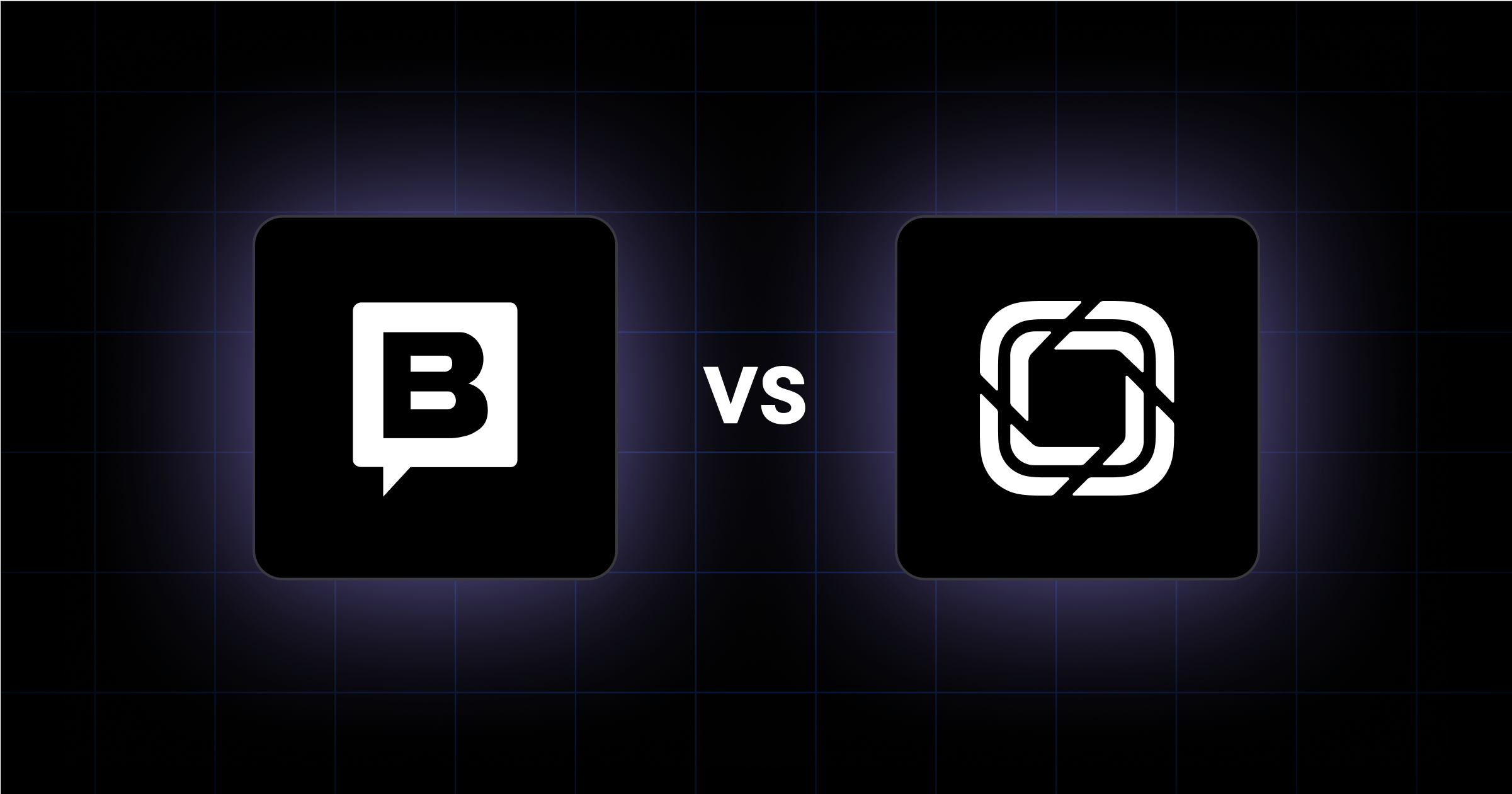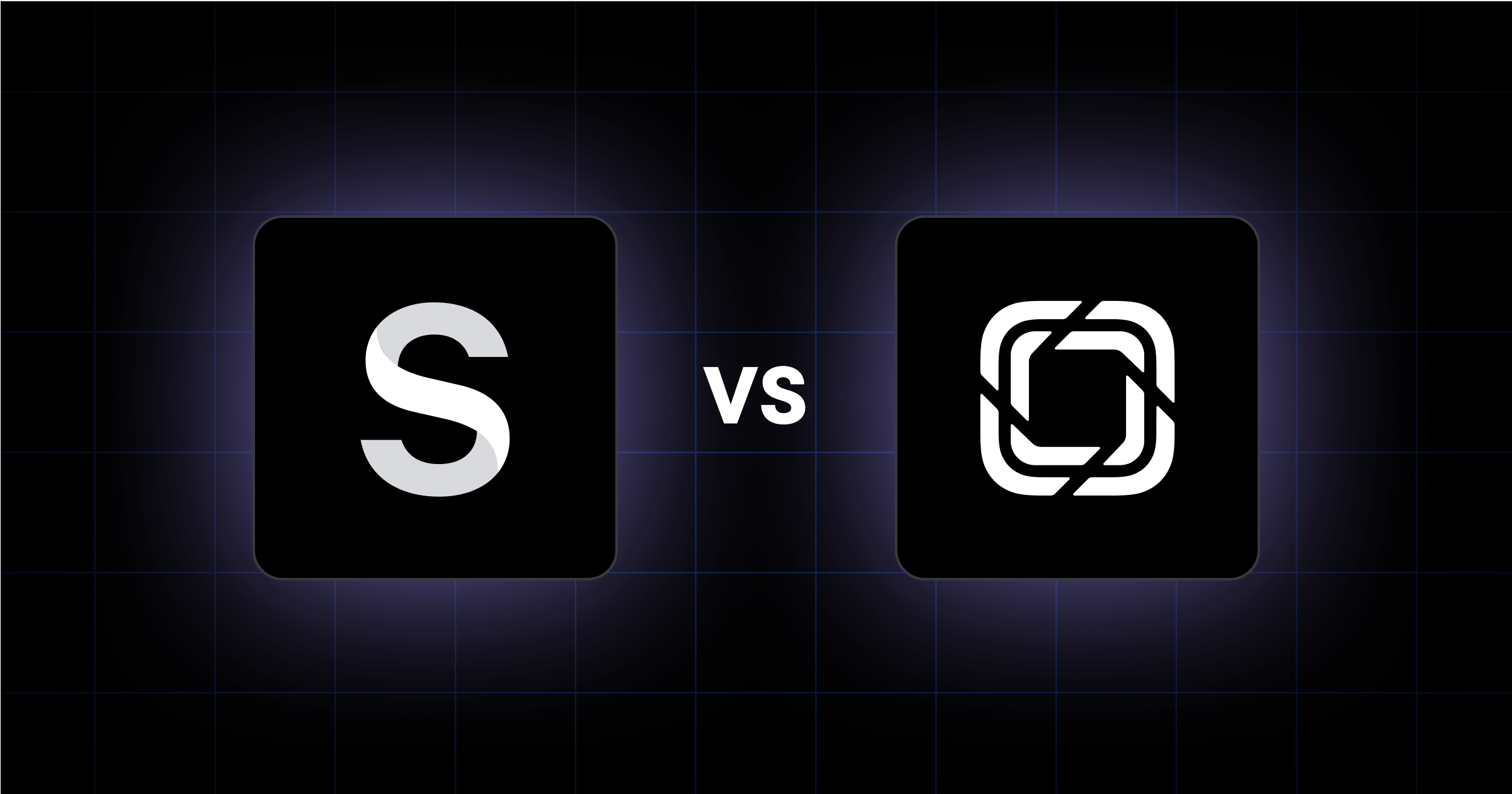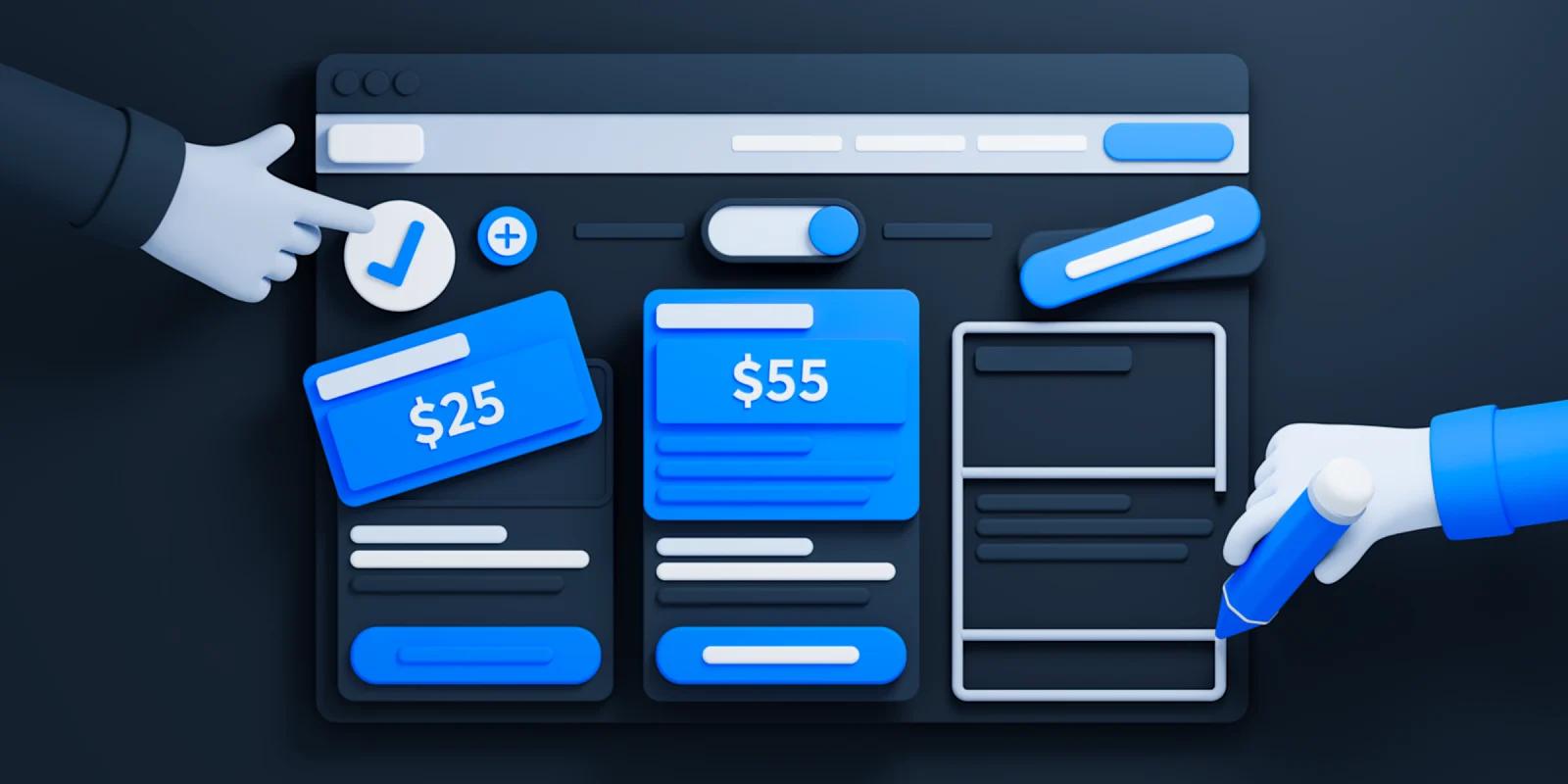The global headless CMS market will reach $3.9 billion by 2025, resulting in a compound annual growth rate of 22.4% from 2021 to 2026.
As headless CMS becomes a new norm, this article will look into all the aspects of choosing one for your needs.
In brief:
- Businesses cab benefit from scalability and faster development, especially when delivering content across multiple platforms.
- Choosing the right CMS means looking at your team’s needs, integration requirements, and long-term growth plans.
- Implementing a headless CMS works best when aligned with clear business goals and a well-prepared team.
3 Types of Headless CMS
With so many choices on the market, it’s crucial to understand the different types of headless CMS when choosing the right CMS to ensure you pick the right one for your needs.
API-first CMS
An API-first CMS is designed from the ground up as a content API. This means it focuses on delivering content through robust APIs, making it highly flexible for various frontend technologies. You can manage and deliver content efficiently, ensuring it reaches multiple platforms like web, mobile, and IoT devices seamlessly.
Git-based CMS
A Git-based CMS stores content in a Git repository. This setup offers version control and collaboration features, allowing multiple team members to work on content simultaneously without conflicts. You benefit from the ability to track changes, revert to previous versions, and collaborate more effectively, much like how developers manage code.
Database-driven CMS
A database-driven CMS stores content in a traditional database but provides a content API for delivery. This type of CMS offers a more familiar experience for those used to traditional content management systems while still enabling the flexibility of a headless approach. You get the best of both worlds: a structured database for content storage and the ability to deliver that content through APIs to various frontends.
Understanding these types can help you align your choice with your team’s expertise and your company’s needs.
How to Choose the Right Headless CMS for Your Enterprise?
Choosing the right CMS can feel daunting, especially with concerns about team skillsets and ROI. Here’s a guide to help you navigate the decision-making process so that you can easily go through the headless CMS implementation process.
Assess your Requirements
Start by identifying the types of content you need to manage. Are you dealing with text, images, videos, or a combination of these? Knowing your content types helps you choose a CMS that can handle your specific needs. Determine the channels you need to deliver content to. Are you focusing on web, mobile, IoT, or all of the above? This will influence the CMS's ability to support multi-channel delivery.
Evaluate your development team's skills and preferences. It’s important for efficient content workflows. If your team is proficient in certain programming languages or frameworks, choose a CMS that aligns with their expertise. This ensures a smoother implementation and reduces the learning curve.
Evaluate API Capabilities
Check if the CMS offers robust content APIs. Strong APIs are the backbone of a headless CMS, enabling efficient content delivery and management. Look for APIs that support your desired programming languages and frameworks. This compatibility ensures your development team can work with the tools they are most comfortable with.
Evaluate API performance and scalability. The CMS should handle high traffic volumes without compromising performance. Test the API response times and see how well it scales with increasing demands. This ensures your content delivery remains fast and reliable as your audience grows.
Consider User Experience
Assess the ease of use for content editors and marketers. A user-friendly interface reduces training time and increases productivity. Look for features like rich text editing, media management, and workflows. These tools help non-technical users create, manage, and publish content efficiently.
Rich text editing allows content creators to format text without needing HTML knowledge. Media management features help organize and optimize images, videos, and other assets. Workflows streamline the content creation process, ensuring smooth collaboration and approval stages.
Evaluate Integration Capabilities
Check if the CMS integrates with your existing tools and platforms. Seamless integration with your current tech stack saves time and resources. Look for multisite CMS solutions and extensibility options like webhooks and custom plugins. These features allow you to extend the CMS's functionality to meet your specific needs.
Webhooks enable real-time notifications and actions based on content changes. Custom plugins let you add new features or modify existing ones, tailoring the CMS to your requirements. This flexibility ensures the CMS can grow and adapt with your business.
Assess Vendor Support and Community
Evaluate the level of documentation and support offered by the vendor. Comprehensive documentation helps your team understand and utilize the CMS effectively. Reliable support ensures you can resolve issues quickly, minimizing downtime and disruptions.
Check the size and activity of the CMS's community and ecosystem. An active community provides valuable resources, such as tutorials, plugins, and forums. This collective knowledge base can help you troubleshoot problems and discover new ways to leverage the CMS.
A strong ecosystem indicates a well-supported and evolving platform. Look for regular updates and new features, ensuring the CMS stays current with industry trends and technological advancements. This ongoing development keeps your CMS relevant and capable of meeting future challenges.
6 Key Features to Look for in an Enterprise Headless CMS
You’re likely wondering about the specific features that will make a real difference in your daily operations.
1. Robust Content Modeling
When choosing a headless CMS, check if it has robust content modeling capabilities. This means you can create custom content types and fields tailored to your specific needs. Whether you need to manage blog posts, product descriptions, or multimedia galleries, the CMS should allow you to define these content structures easily.
Field validation ensures that the data entered meets your criteria, reducing errors and maintaining consistency. Localization options enable you to adapt content for different regions and languages, ensuring a global reach without compromising on quality.
2. Powerful APIs
Powerful APIs are the backbone of a headless CMS. They should offer fast and efficient content delivery, ensuring that your users experience minimal latency. The APIs should support multiple programming languages and frameworks, giving your development team the flexibility to use the tools they are most comfortable with. This compatibility ensures seamless integration with your existing tech stack and allows for easy scaling as your needs grow.
3. Granular Roles and Permissions
Managing large teams and complex workflows requires granular roles and permissions. A good headless CMS allows you to define user roles and access controls, ensuring that each team member has the appropriate level of access. This feature is particularly useful for enterprises where different departments need varying levels of access to the content.
For example, marketers might need full editing capabilities, while developers might only need access to the API. Granular permissions help maintain security and streamline workflows by ensuring that only authorized personnel can make changes.
4. Multi-language and Localization
Supporting multiple languages and localization is vital for enterprises targeting a global audience. The CMS should allow you to create and manage content in various languages, ensuring that your message reaches a diverse audience.
Tools for translating and localizing content make this process more manageable, allowing you to maintain consistency across different regions. This feature helps you cater to local preferences and regulations, enhancing user experience and compliance.
5. Previewing and Testing
Previewing and testing capabilities are essential for maintaining content quality and consistency. The CMS should allow you to preview content changes before publishing, ensuring that everything looks and functions as expected.
Testing tools help you identify and fix issues early, reducing the risk of errors going live. This feature is particularly useful for enterprises with complex content structures and multiple stakeholders, as it allows for thorough review and approval processes.
6. Scalability and Performance
Scalability and performance are non-negotiable for an enterprise headless CMS. The system should handle large volumes of content and traffic without compromising on speed or reliability. High availability ensures that your content is accessible at all times, minimizing downtime and disruptions.
Fast response times enhance user experience, keeping your audience engaged and satisfied. As your enterprise grows, the CMS should scale effortlessly, accommodating increasing demands and ensuring consistent performance.
How Does a Headless CMS Work?
Understanding how a headless CMS operates can alleviate concerns about implementation complexity, content migration plan, and integration with your current systems.
A headless CMS operates by separating the content management from the presentation layer, allowing for greater flexibility and scalability. Here’s a detailed look at how it functions:
- Content is created and stored in the headless CMS: You start by creating and managing your content within the headless CMS interface. This content can include text, images, videos, and other media types. The CMS stores this content in a structured format, making it easy to retrieve and manipulate.
- The CMS exposes content via APIs (usually REST or GraphQL): Once your content is stored, the CMS makes it accessible through APIs. These APIs, typically REST or GraphQL, allow you to query and fetch the content as needed. This API-first approach ensures that your content can be delivered to any platform or device that can consume an API.
- Frontend applications consume the content via APIs: Your frontend applications, whether they are websites, mobile apps, or IoT devices, request content from the CMS using these APIs. The frontend can be built using any technology stack, such as React, Angular, or Vue.js, giving you the freedom to choose the best tools for your needs.
- Content is rendered on the frontend using the desired technology stack: The frontend application takes the content retrieved from the CMS and renders it for the user. This decoupling of the frontend and backend allows for more dynamic and responsive user experiences, as the frontend can be optimized independently of the backend.
- Changes in the frontend do not require modifying the CMS: One of the significant advantages of a headless CMS is that changes to the frontend do not necessitate changes to the CMS. You can redesign or update your frontend without affecting the content management system, allowing for greater flexibility and faster iterations.
- Changes in the CMS are immediately available on all frontends: When you update content in the CMS, those changes are instantly available to all connected frontends. This real-time content delivery ensures consistency across all platforms, providing a seamless experience for your users regardless of how they access your content.
Why Should Enterprises Adopt a Headless CMS?
You might be concerned about implementation complexity or how a new CMS will integrate with your existing tech stack. Here’s why it’s worth considering.
Flexibility and Scalability
A headless CMS allows you to build frontend experiences using any technology. Whether you prefer React, Angular, Vue, or something else, you have the freedom to choose the best tool for your project. This flexibility means you can create unique and engaging user experiences without being limited by the CMS's frontend capabilities.
Delivering content to multiple channels becomes straightforward with a headless CMS unlike a composable CMS. You can push content to websites, mobile apps, IoT devices, and more from a single source. This multi-channel delivery ensures consistency across all platforms and allows you to reach your audience wherever they are.
Faster Development
Decoupling frontend and backend development speeds up the development process. Your frontend and backend teams can work independently, reducing bottlenecks and improving efficiency. This separation allows for parallel development, meaning you can build and launch features faster.
Faster time-to-market becomes achievable with a headless CMS. Since your teams work independently, you can iterate quickly and respond to market demands without waiting for backend changes. This agility gives you a competitive edge and helps you stay ahead of the curve.
Improved Security
Separating the frontend from the backend reduces the attack surface. With fewer entry points, your system becomes harder to breach. This separation also means that vulnerabilities in the frontend do not compromise the backend, enhancing overall security.
Implementing robust security measures on the API level becomes more manageable. You can focus on securing your APIs with authentication, authorization, and encryption, ensuring that only authorized users access your content. This approach provides a strong defense against potential threats.
Future-proofing
Next up is future-proofing your website. Adapting to new technologies and channels becomes easier with a headless CMS. As new devices and platforms emerge, you can integrate them without overhauling your entire system. This adaptability ensures your content remains relevant and accessible, no matter how the digital landscape evolves.
Preventing vendor lock-in gives you more control over your technology stack. Since a headless CMS uses APIs to deliver content, you can switch frontend frameworks or backend services without being tied to a specific vendor. This flexibility allows you to choose the best tools for your needs and avoid being stuck with outdated or subpar solutions.
Is a Headless CMS the Right Choice for Enterprises?
Choosing the best headless CMS for your enterprise hinges on understanding your specific requirements and use cases. Each enterprise has unique needs, so the ideal CMS will vary.
It's important to thoroughly evaluate and test each CMS before making a decision. Look for a CMS that offers the right balance of features, performance, and support for your needs. Consider factors such as API capabilities, user experience, integration options, and vendor support to ensure you choose the best headless CMS for your enterprise.
Our Take on How to Choose the Right Headless CMS for Your Enterprise
Selecting an appropriate headless CMS requires an evaluation of your organization's specific needs and technical capabilities.
It's essential to assess how well the CMS integrates with your existing tech stack and whether it supports your desired content delivery channels. Consider the scalability of the platform to accommodate future growth and its flexibility to adapt to evolving business requirements.
Also, evaluate the user interface for content creators and the availability of developer resources to ensure a seamless implementation.
See the Webstacks Difference: Schedule a Brief Discovery Call Today. At Webstacks, we specialize in designing and engineering composable websites tailored to your enterprise needs. Discover how we can help you build scalable, cutting-edge digital experiences by scheduling a brief discovery call with us here.




